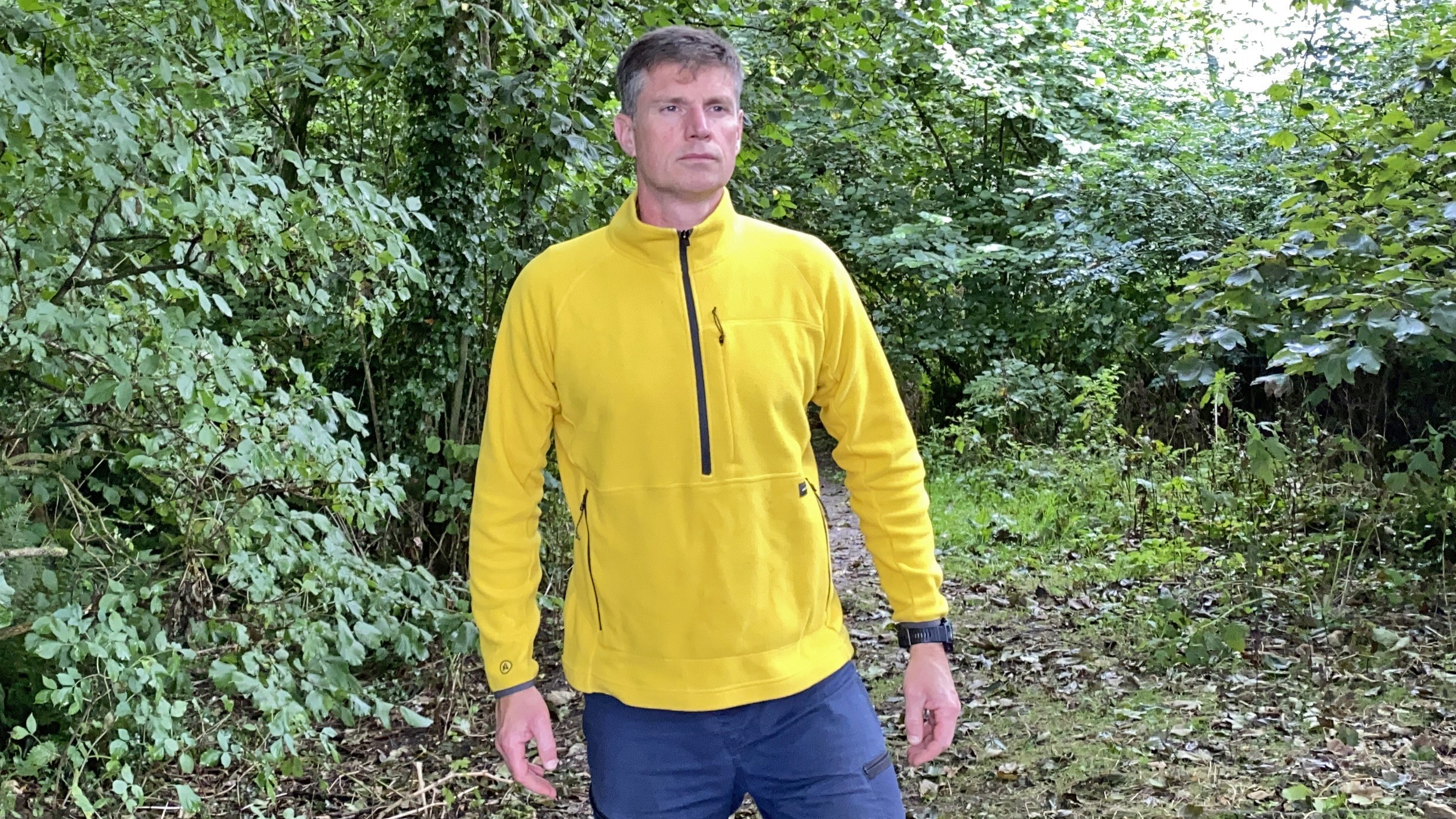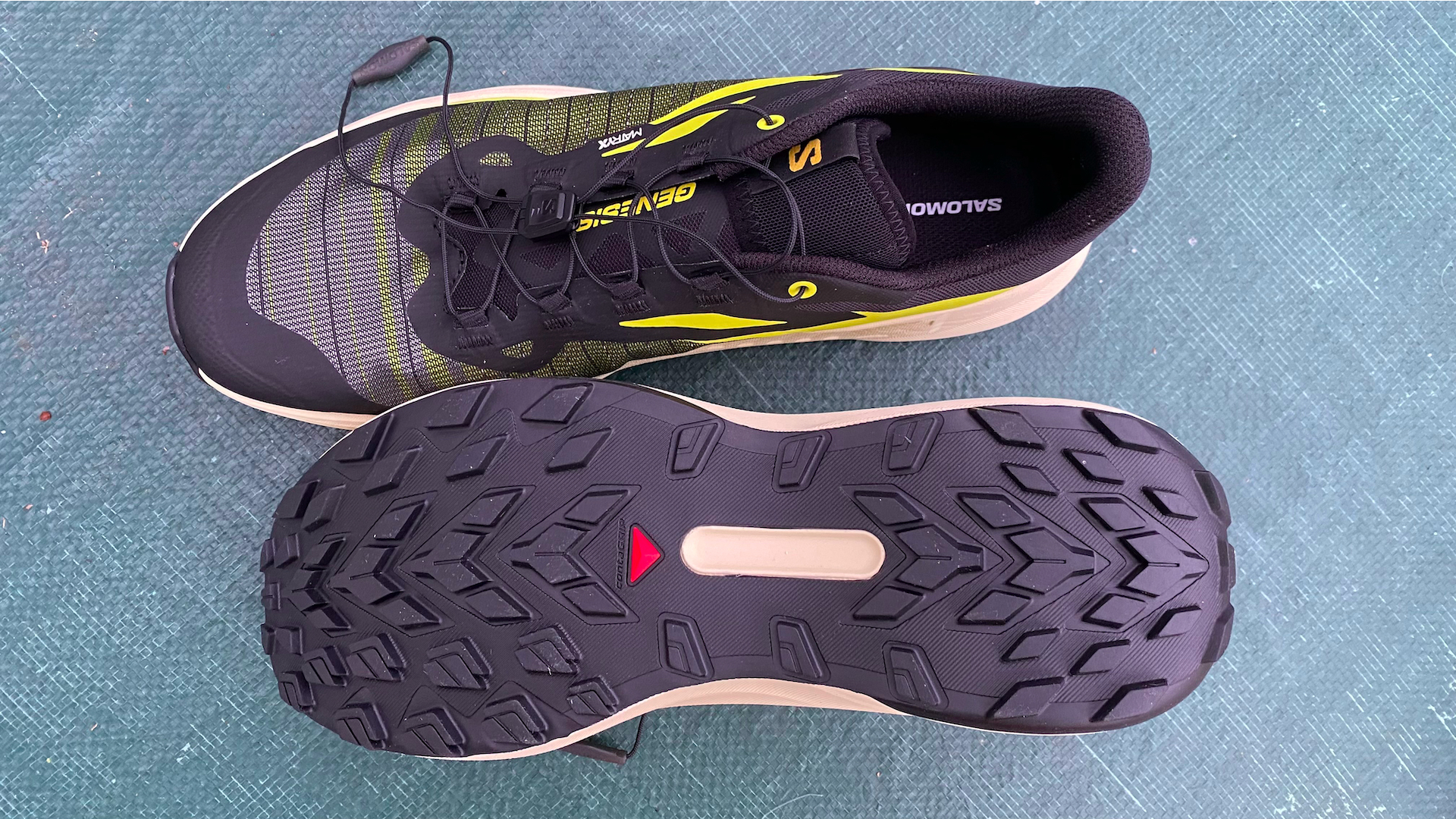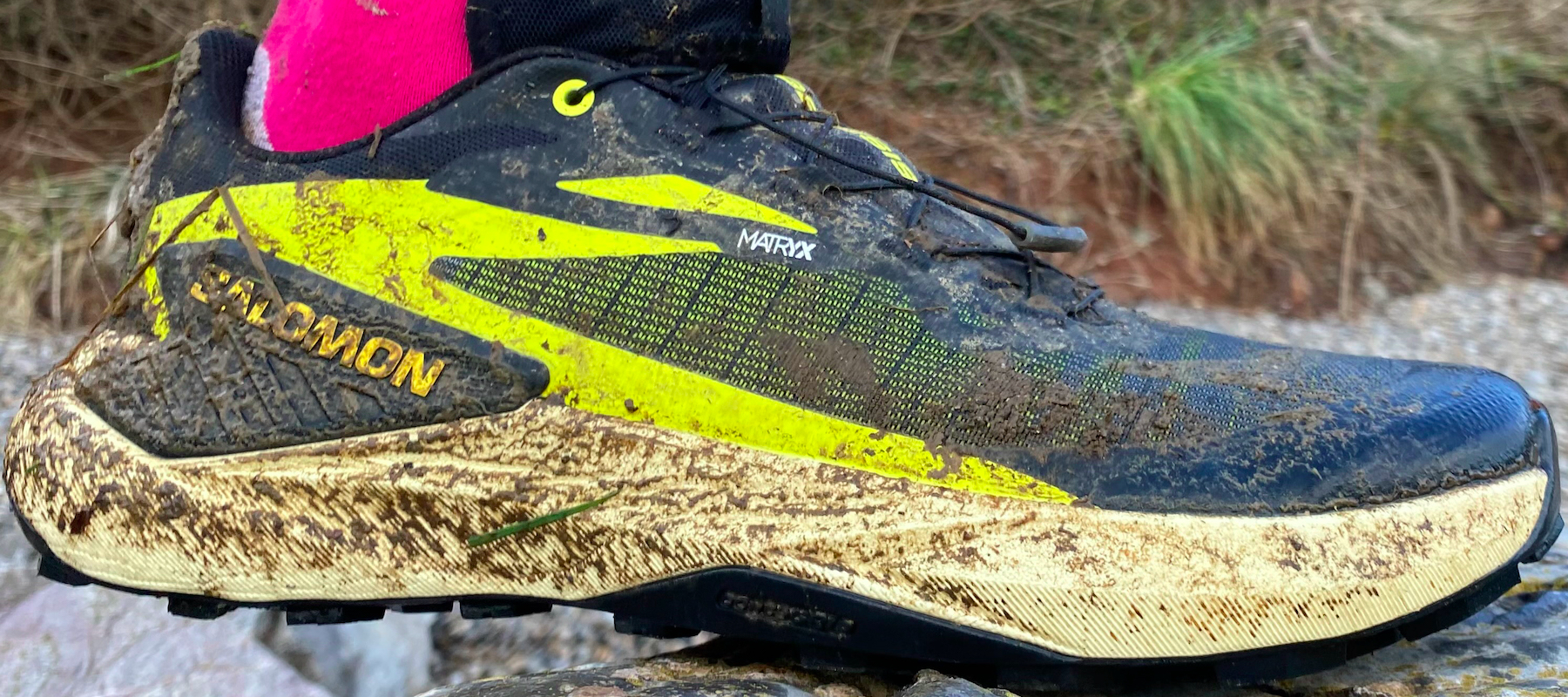Advnture Verdict
If you love the look and capability of the Salomon S/Lab Genesis, but balk at the price, then this new, more affordable and accessible version of the excellent trail-running shoe is well worth checking out. On test, I found that this shoe managed to combine an impressive level of performance with excellent comfort and good protection (although it lacks a rockplate, which I think is an omission). With an upper made with one-third recycled materials, and reinforced with woven Matryx, the Genesis has a reasonably light environmental footprint too, not least because it promises to outlast many other comparable shoes.
Pros
- +
Tough upper
- +
Comfortable and breathable
- +
Good grip
- +
Quicklace system
- +
Chassis is made with 34% recycled material
Cons
- -
Little to no trail feel
- -
No rockplate
You can trust Advnture
Meet the reviewer

Pat has hiked all over the world, his adventures taking him to Mont Blanc, the roof of Western Europe; the Norwegian Alps; the highest peaks on Australia; and New Zealand’s Great Walks – among others. He’s an experienced tester of hiking footwear and gives each pair a thorough thrashing before reviewing.
Salomon Genesis: first impressions
A pared-down (and cheaper) version of Salomon’s more elite S/Lab Genesis, these Salomon Genesis trail running shoes are primarily aimed at people who hit the rough stuff two to three times a week, and don’t want to squeeze their pinkies into the super-sporty narrow chassis that usually feature in the French brand’s high-performance shoes. But do they still give the best trail running shoes a run for their money?
• List price: $150 (US) / £140 (UK) / €150 (EU)
• Weight (per shoe, men’s size 11): 269g/9.5oz
• Drop: 8mm
• Materials: Synthetic ‘Matryx’ woven upper with Quicklace; Energy Foam midsole; Contragrip outsole
• Colors: Men’s: Carbon, Tahitian Tide & Quiet Shade / Dragon Fire, Black & Cement / Black, Sulphur Spring & Transparent Yellow; Women’s: Black, Sulphur Spring & Orchid Petal / Bird of Paradise, Black & Almond Milk / Carbon, Grisaille & Aloe Wash
• Compatibility: Off-road running on various types of terrain, but especially rough and rocky trails
Salomon says the Genesis has been designed to excel on rocky terrain, and the upper – protected by a densely woven Matryx material (the same technology that appears on the more expensive S/Lab iteration of the shoe) – makes them more resistant to wear and tear when you’re running on the rough stuff. However, somewhat surprisingly (given they’re designed for running across rugged landscapes), there doesn’t appear to be a rockplate in these shoes to protect feet from bruising and potential puncture wounds from sharp stones and sticks.
They have a heel-to-toe drop of 8mm, a generously cushioned midsole and an impressively toothy Contragrip outsole, with 4.5mm lugs arranged in a two-part pattern intended to give the wearer a high level of confidence and control on technical terrain.
We are pleased to see that 34% of the upper is made with recycled materials (hopefully Salomon will raise this ratio in future generations of the shoe).
Salomon Genesis: on the trails

I’ve been wearing the new Genesis running shoes from Salomon while tackling extremely wet and fairly technical trails around the coast, countryside and moorland in South West England during a relentlessly rainy winter. The brand tout these shoes as mountain runners, but I think they’re pretty decent across a range of terrain, including muddy hills – which is just as well, because I can’t move for muck on the woodland paths and cliff-top tracks around me at the moment.
Unlike many of Salomon’s more high-end, performance-focused running shoes, this model of the Genesis has a much more relaxed fit and feel, with more space around the ball of the foot. This makes them comfortable trail running shoes for a lot of people – very much including me (with broad feet and bunions, I often struggle to wear Salomon shoes because they’re typically narrow and tight). The toe box is still pretty tight, but not to the point that it has caused me any significant problems so far.

Despite this extra expansion room in the chassis, during testing I’ve found that the hard-wearing woven Matryx upper still supplies excellent support for my feet, and the Quicklace system enables me to get as tight a fit as I could possibly require (the Quicklace includes a top eyelet for extra security, so you don’t lose a shoe going through deep bog).
All the latest inspiration, tips and guides to help you plan your next Advnture!
This more accessible version of the Genesis doesn’t have the elasticated inner sock and ankle gaiter built into the chassis, but there’s still an integrated and gusseted tongue that effectively keeps grit and other trail debris out of the shoe. This tongue is also padded and very comfortable.

The Energy Foam in the midsole brings some bounce to the party, and absorbs plenty of impact too. The stack height is 30mm under the heel, reducing to 22mm at the toes, and I find this 8mm drop perfect for running on a range of terrain, offering the ideal balance between supplying protection and maintaining a low center of gravity on more technical trails.
When all this is combined with Salomon’s ‘Active Chassis’ design – whereby your heel is cradled by a super-supportive upper – these shoes really inspire confidence when tackling technical trails, a feeling further enhanced by the grip, traction and braking control provided by the Contragrip-covered outsole, with its smartly positioned 4.5mm deep chevron-shaped lugs.

Despite the apparent lack of a rockplate, I haven’t felt anything really protruding through the soles or experienced any discomfort, and I’ve deliberately sought out rocky trails to run on while testing these shoes.
It’s early days, so I can’t comment too much on the genuine durability of the Matryx-protected chassis, but the conditions I have been wearing these shoes in (ankle deep mud, bogs and saltwater-lashed rocks) will soon reveal any weaknesses, and I’ll keep you posted. So far they’ve held up just fine – but you’d expect that from a shoe that still has a pretty premium price tag (even if it is considerably cheaper than its fancy S/Lab cousin).


Author of Caving, Canyoning, Coasteering…, a recently released book about all kinds of outdoor adventures around Britain, Pat has spent 20 years pursuing stories involving boots, bikes, boats, beers and bruises. En route he’s canoed Canada’s Yukon River, climbed Mont Blanc and Kilimanjaro, skied and mountain biked through the Norwegian Alps, run an ultra across the roof of Mauritius, and set short-lived records for trail-running Australia’s highest peaks and New Zealand’s Great Walks. He’s authored walking guides to Devon and Dorset, and once wrote a whole book about Toilets for Lonely Planet. Follow Pat’s escapades on Strava here and Instagram here.

